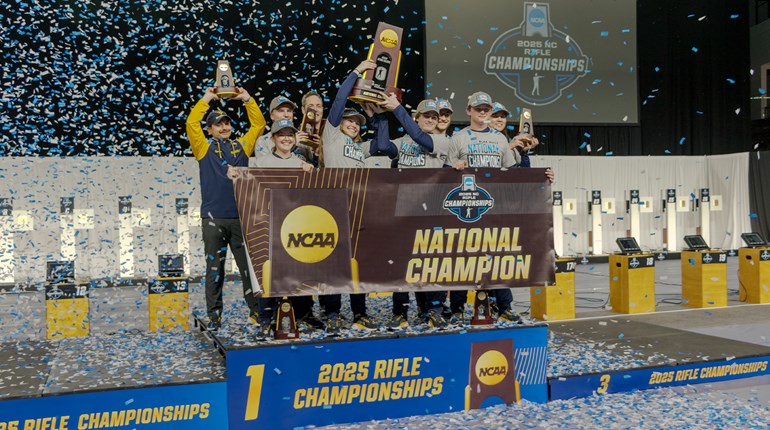
Octogenarian Bruce Meredith began shooting competitively in 1951 at Linsly Military Institute in Wheeling, WV, where marksmanship was a mandatory class. While there, he earned the NRA Distinguished Expert Award. Meredith then attended West Virginia University, where he helped lay the foundation for West Virginia’s rifle shooting powerhouse squad that still garners accolades to this day. After receiving All-American nods in 1960 and 1961, he graduated from WVU and was commissioned a second lieutenant in the Air Defense Artillery.

During his early career, Meredith continued shooting. As a member of the team that won the 1963 Critchfield-Herrick Trophy, awarded to the high-scoring team shooting the service rifle in the 1,000-yard Herrick Trophy Team Match, he attracted the attention of the U.S. Army Marksmanship Unit. Assigned to Fort Benning in 1965, Meredith shot both service and international rifle earning his Distinguished Rifleman Badge and Presidents Hundred Tab. He won the 1967 National Smallbore Prone Championship, firing the first any sight 3200 in the history of the event. Later that year, Meredith competed in the first of his six Pan American Games, where he was a member of a world record team and earned the U.S. Distinguished International Shooter Badge in the process. He added the National Rifle Association’s Distinguished Prone and Position Awards the following year.
Meredith left active duty in 1968 and began an 18-year tenure as the Officer in Charge of the U.S. Army Reserve International Rifle Team. His real contribution with the rifle team was not on the firing line; but rather recruiting and training over 60 elite athletes that won over 100 medals at the Olympics, World Championships, Pan American Games and U.S. National Championships.
He also dabbled in pistol, earning his Distinguished Pistol Badge and Pistol Presidents Hundred Tab in 1986.
Not content with success with firearms, he began shooting crossbow, and was a founder of the U.S. Armbrust Association in 1979. Subsequently, Meredith competed in eight World Crossbow Championships and received the Armbrust Distinguished Crossbow Award.

After 30 years of active and reserve service, he retired in 1991 as a colonel. While in the military, Meredith found time to graduate from Airborne and Ranger Schools, as well as the Army’s Command and General Staff and the Air Force’s Air War Colleges. Not long after his retirement, Meredith began coaching and competing in the U.S. Virgin Islands. He represented them in four Olympics.
By the time he was 63, Meredith was the oldest competitor at the Sydney 2000 Olympic Games (his fourth Summer Olympics), and had competed in five World Championships, six Pan American Games and five Championships of the Americas—taking home two golds, a silver and four bronze medals.
In 2015, the NRA created the International Distinguished Smallbore Rifleman Award for members of the shoulder to shoulder International Pershing and Roberts Teams. Meredith was on the winning 1969 Roberts Team, and placed in the top three individually—also earning his eighth Distinguished Shooter designation.
At age 82, with nearly seven decades of competition in 40 countries under his belt, this National Record holder is the last competing vestige of the great U.S. Army teams of the 1960s and 1970s. They were coached by the legendary Bill Pullum and built around the legendary likes of Lones Wigger, Tommy Pool, Jack Foster, Jack Writer, Margaret Murdock, Gary Anderson, Martin Gunnarsson, Bill Krilling, Verle Wright, Lanny Bassham and Dave Kimes—who rocketed the United States to domination in the international shooting arena.
But that doesn’t seem to be enough for the old war horse, as Meredith is currently working on his ninth Distinguished designation, the CMP’s .22 LR Rimfire Pistol Distinguished Badge.
Read more articles by Hap Rocketto:



































